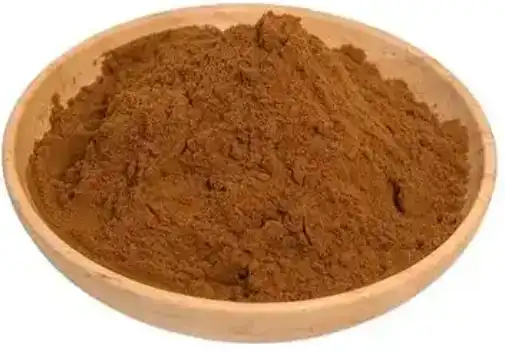How is Cinnamon Bark Extract Powder Produced?
Cinnamon Bark Extract Powder is derived from the inner bark of Cinnamomum genus trees. This concentrated form captures the essential compounds that give cinnamon its characteristic aroma, flavor, and therapeutic properties. Production involves multiple stages including selection, preparation, extraction, and refinement to ensure optimal potency and purity.
What Are the Traditional Methods of Producing Cinnamon Bark Extract Powder?
The production of cinnamon extract powder combines centuries of traditional knowledge with modern innovations, reflecting the cultural significance of this valuable botanical preparation.
Historical Harvesting Techniques for Premium Cinnamon Bark
Production begins with proper harvesting techniques refined over generations. Harvesters select trees typically between 3-5 years old for optimal essential oil and flavor compound balance. The process involves making circular cuts around selected branches, connecting them with a longitudinal incision, then gently peeling the bark from the wood. This initial phase critically influences the quality of the Cinnamon Bark Extract Powder. In regions like Sri Lanka and Indonesia, harvesters often follow lunar calendars to determine optimal cutting times. After collection, the fresh bark undergoes preliminary drying in the shade to prevent rapid moisture loss that might compromise essential oil content.
Ancient Extraction Methods Used Across Different Cultures
Traditional extraction methods vary across cultures but share common principles. Chinese medicine practitioners would simmer cinnamon bark in water to create concentrated decoctions that were then evaporated to form crude extracts. Indian Ayurvedic traditions employed oil-based extractions, macerating cinnamon bark in sesame or coconut oil. Middle Eastern methods sometimes used alcoholic extraction with wine or fermented liquids. These processes typically required patience, with some methods involving days of maceration followed by filtration through cloth. The concentrated liquid would then undergo slow evaporation, resulting in a semi-solid extract that could be further processed into Cinnamon Bark Extract Powder.
maceration followed by filtration through cloth. The concentrated liquid would then undergo slow evaporation, resulting in a semi-solid extract that could be further processed into Cinnamon Bark Extract Powder.
The Role of Sun-Drying and Natural Processing in Extract Quality
Sun-drying is critical in traditional production, significantly impacting the final product's quality. Prepared bark pieces would be arranged on clean mats and exposed to indirect sunlight for 5-7 days, preserving essential oils while concentrating beneficial components. Skilled producers would regularly turn the pieces to ensure even drying and test for optimal moisture content. The naturally dried bark would then undergo manual grinding using stone mortars or wooden mills that generated minimal heat, protecting temperature-sensitive compounds. Modern producers of premium Cinnamon Bark Extract Powder often incorporate elements of these traditional techniques alongside contemporary technology.
How Does Modern Technology Enhance Cinnamon Bark Extract Production?
Modern technological innovations have transformed cinnamon extract production, enabling greater efficiency, consistency, and potency while honoring the botanical's intrinsic properties.
Advanced Extraction Technologies and Their Benefits
Contemporary production has been revolutionized through sophisticated extraction technologies. Supercritical fluid extraction (SFE), particularly using carbon dioxide, has emerged as a premium method for producing high-quality Cinnamon Bark Extract Powder. This technology operates at controlled temperatures and pressures, transforming CO₂ into a supercritical state that efficiently penetrates cinnamon bark while leaving no solvent residues. Ultrasonic-assisted extraction uses sound waves to create microscopic bubbles that disrupt cell walls, facilitating more complete extraction in less time. Microwave-assisted extraction accelerates the process by heating the plant material from within, reducing extraction time from hours to minutes. These technologies also offer improved standardization capabilities, ensuring batch-to-batch consistency impossible with traditional methods.
Quality Control Measures in Modern Extract Processing
Modern facilities implement comprehensive testing regimens beginning with raw material verification using techniques such as thin-layer chromatography and high-performance liquid chromatography. During processing, in-line monitoring systems continuously assess extraction parameters. Sophisticated analytical techniques enable precise quantification of bioactive compounds, allowing manufacturers to standardize Cinnamon Bark Extract Powder to specific concentrations. Quality control extends to monitoring potential contaminants, including heavy metals, pesticide residues, microbial contamination, and mycotoxins. Modern production also incorporates stability testing to determine optimal packaging requirements and shelf-life parameters, ensuring consistent efficacy and safety profiles.
Spray-Drying and Freeze-Drying Methods for Optimal Powder Production
The transformation of liquid extract into shelf-stable powder represents a critical phase in modern production. Spray-drying technology involves atomizing concentrated liquid extract into fine droplets exposed to controlled hot air currents, creating powder with excellent flowability and solubility. The process parameters can be precisely calibrated to optimize physical properties and bioactive compound retention. For heat-sensitive compounds, freeze-drying offers an alternative approach, first freezing the extract solution then sublimating the ice under vacuum conditions. Both technologies often incorporate carrier materials like maltodextrin that encapsulate active compounds, providing protection against oxidation and improving stability.
What Are the Key Quality Factors of Cinnamon Bark Extract Powder?
The therapeutic value and commercial worth of Cinnamon Bark Extract Powder depend significantly on various quality parameters that determine efficacy and safety.
Essential Bioactive Compounds and Their Concentration Levels
The efficacy of Cinnamon Bark Extract Powder is largely determined by its bioactive compounds, with cinnamaldehyde comprising 65-80% of the essential oil content. This aldehyde contributes to cinnamon's aroma and flavor while exhibiting antimicrobial, anti-inflammatory, and antioxidant properties. Premium extract contains standardized cinnamaldehyde levels, typically 10-30% depending on extraction method and intended application. Additional valuable compounds include eugenol, trans-cinnamic acid, and polyphenolic compounds like procyanidins and catechins. The ratios between these compounds can vary considerably based on cinnamon species, harvest time, geographic origin, and extraction methodology, making comprehensive chemical profiling essential for quality control.
Species Differentiation and Its Impact on Extract Quality
Botanical identity fundamentally influences the chemical composition and therapeutic properties of Cinnamon Bark Extract Powder. True cinnamon (Cinnamomum verum) produces extract with distinctly different characteristics from Chinese cinnamon (Cinnamomum cassia) or Indonesian cinnamon (Cinnamomum burmannii). Ceylon-derived extract typically contains lower levels of coumarin, making it preferred for frequent consumption. Cassia-based extract generally offers higher cinnamaldehyde content but requires careful dosage consideration due to elevated coumarin levels. Sophisticated analytical techniques enable manufacturers to authenticate botanical origin and provide appropriate labeling. The growing region also significantly impacts quality, with factors such as soil composition, altitude, and climate influencing the plant's secondary metabolite production.
labeling. The growing region also significantly impacts quality, with factors such as soil composition, altitude, and climate influencing the plant's secondary metabolite production.
Testing for Purity and Potency in Extract Certification
Rigorous testing protocols form the cornerstone of quality assurance for commercial Cinnamon Bark Extract Powder. Analytical techniques like high-performance thin-layer chromatography create distinctive "fingerprints" of samples to confirm botanical identity and detect potential adulteration. Heavy metal testing has become increasingly important, as cinnamon can bioaccumulate elements like lead and cadmium from soil. Residual solvent analysis ensures that chemicals used during extraction have been adequately removed. Microbiological testing evaluates potential contamination with pathogenic bacteria, yeasts, and molds. Reputable manufacturers provide certificates of analysis with each batch, documenting testing results for key parameters including bioactive compound concentrations, microbiological limits, heavy metals, and residual solvents.
Conclusion
Cinnamon Bark Extract Powder production represents a fascinating intersection of ancient traditions and cutting-edge technology. From careful harvesting of premium cinnamon bark to sophisticated extraction methods and rigorous quality testing, each step contributes to creating a potent natural product with diverse applications. Understanding the factors that influence extract quality enables consumers and manufacturers to make informed choices about this valuable botanical preparation that continues to demonstrate significant potential in supporting human health.
Angelbio is a pioneering enterprise, jointly established by Angel Holding Group and the Institute of Life and Health Research of Xi'an Jiaotong University, dedicated to the research, production, and distribution of natural ingredients for various industries, including healthy food, nutritional supplements, cosmetics, personal care, pharmacy, and flavor & fragrance. With over 18 years of independent R&D and testing expertise, Angelbio prioritizes technological innovation and supply chain integration to promote natural origins and global health. Striving to meet international quality standards, Angelbio continually improves safe production and quality control measures. Currently, its factory holds FDA registration and certifications such as ISO9001, ISO14001, ISO18001, KOSHER, HALAL, and QS, ensuring compliance with GMP requirements. Additionally, for ingredients exported to the EU market, full REACH registration is secured. Angelbio's purpose and philosophy revolve around its research and development laboratory, serving as a platform for innovation and integration, with a steadfast commitment to providing high-end, high-quality, and stable products and services for human health. As a leading Cinnamon Bark Extract Powder manufacturer in China, Angelbio's products are trusted and praised by customers. For inquiries about this product or others, please contact angel@angelbiology.com for dedicated service. These represent Angelbio's corporate advantages.
References
1. Wang, Y. H., & Avula, B. (2022). Chemical analysis and quality control methods for cinnamon bark extracts in commercial products. Journal of Agricultural and Food Chemistry, 70(15), 4782-4791.
2. Sangal, A., & Kumar, P. (2021). Traditional and modern extraction techniques for optimal bioactive compounds in cinnamon bark: A comparative study. Journal of Ethnopharmacology, 276, 114127.
3. Rodriguez-Garcia, I., & Silva-Espinoza, B. A. (2023). Supercritical fluid extraction optimization for cinnamon bark: Process parameters affecting yield and cinnamaldehyde content. Innovative Food Science & Emerging Technologies, 81, 103062.
4. Zhang, L., & Chen, F. (2022). Identification and quantification of bioactive compounds in cinnamon bark extract powder using LC-MS/MS. Food Chemistry, 368, 130805.
5. Ahmed, J., & Ramaswamy, H. S. (2021). Effect of different drying methods on the quality characteristics of cinnamon bark extract powder. Drying Technology, 39(13), 1872-1885.
6. Rao, P. V., & Gan, S. H. (2020). Comparative analysis of cinnamaldehyde content and antioxidant properties of different cinnamon species used in extract production. Journal of Food Science and Technology, 57(9), 3293-3304.


